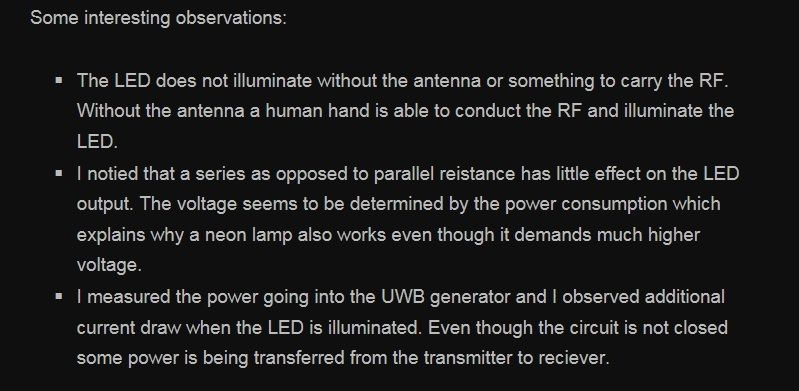This thread is being set up as a collaborative investigation of single wire power (SWP) transmission. The goal is simply to arrive at a better understanding of SWP by discussing:
- various means of production and their merits
- associated effects and phenomena
- commonly agreed upon terms to describe the above.
At this initial stage, you are invited to post:
- links to videos which claim to demonstrate SWP
- links to research papers about SWP
- discussion on merits of posted information and approaches.
Later, we will seek:
- to organize electrical terms and effects surrounding the SWP field
- to identify some simple and safe approaches to producing SWP effects for further experimentation.
Some ground rules - if you decide to post, please respect the following:
- keep discussion/debate focused on principles and not persons
- honor one another’s posts
- allow for a divergence of viewpoints, frames of reference and terminologies, given that this topic spans more than one electrodynamic paradigm. It’s okay to agree to disagree, but let’s do it respectfully.
- various means of production and their merits
- associated effects and phenomena
- commonly agreed upon terms to describe the above.
At this initial stage, you are invited to post:
- links to videos which claim to demonstrate SWP
- links to research papers about SWP
- discussion on merits of posted information and approaches.
Later, we will seek:
- to organize electrical terms and effects surrounding the SWP field
- to identify some simple and safe approaches to producing SWP effects for further experimentation.
Some ground rules - if you decide to post, please respect the following:
- keep discussion/debate focused on principles and not persons
- honor one another’s posts
- allow for a divergence of viewpoints, frames of reference and terminologies, given that this topic spans more than one electrodynamic paradigm. It’s okay to agree to disagree, but let’s do it respectfully.











Comment